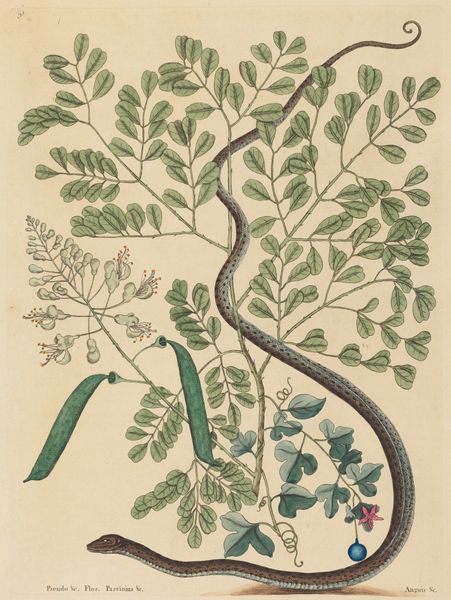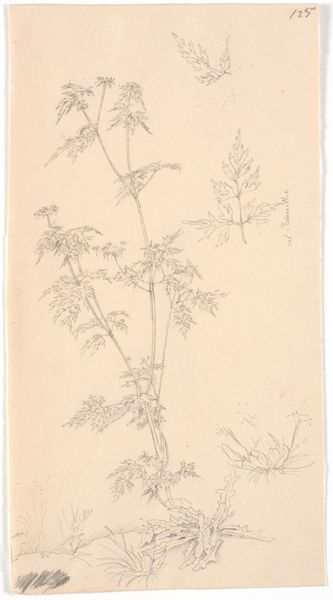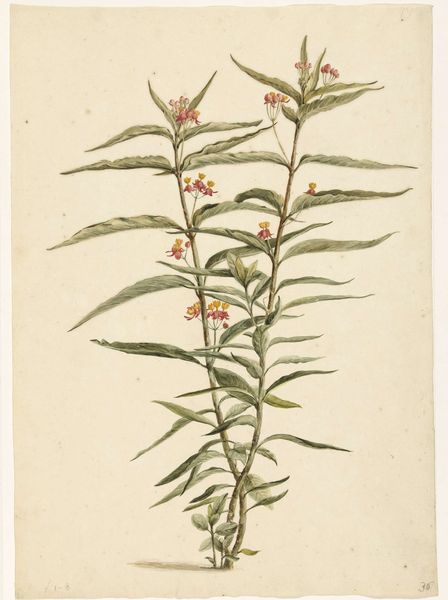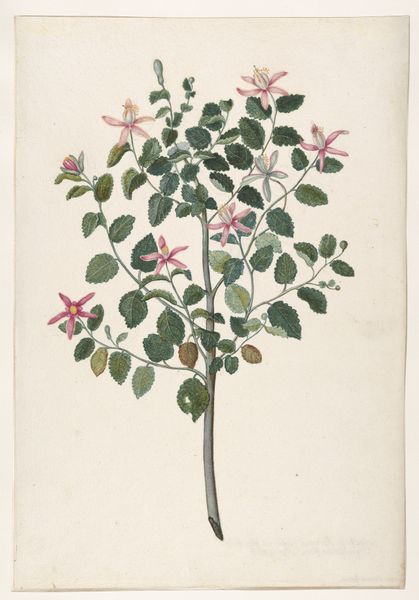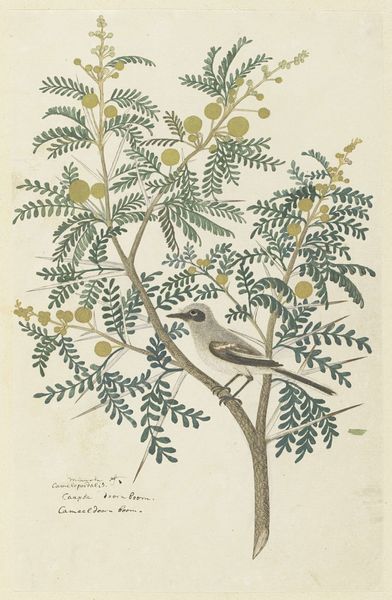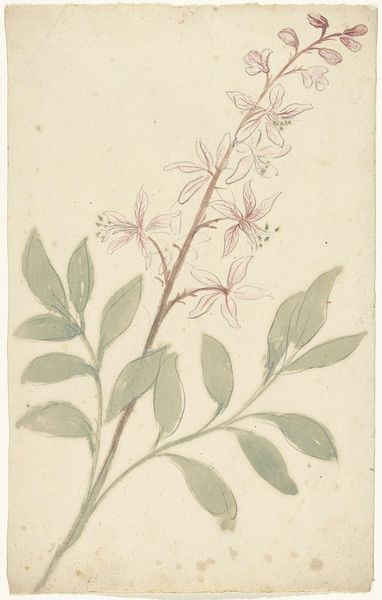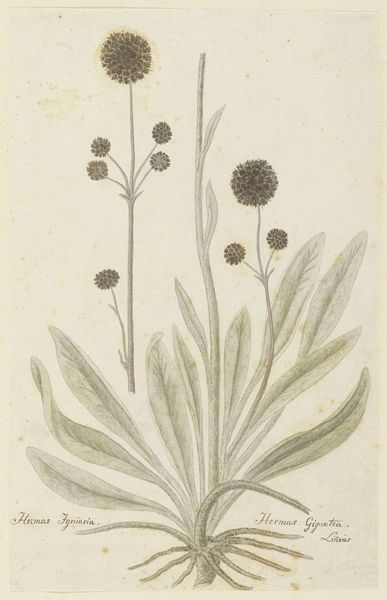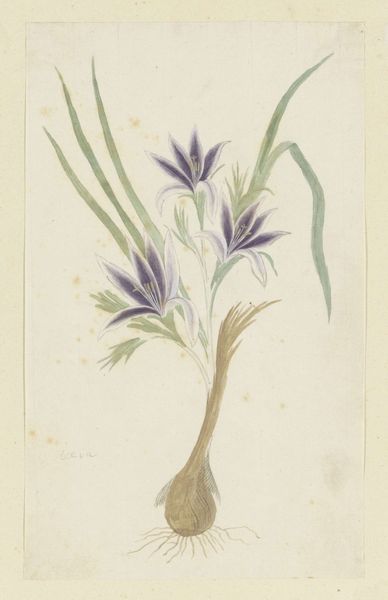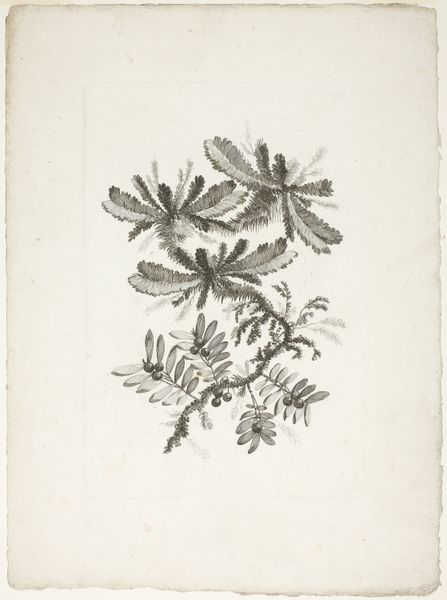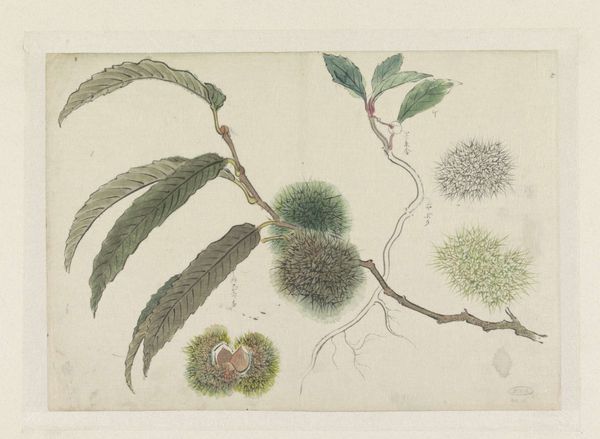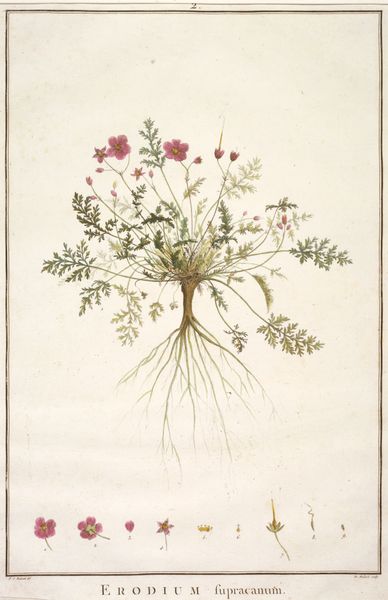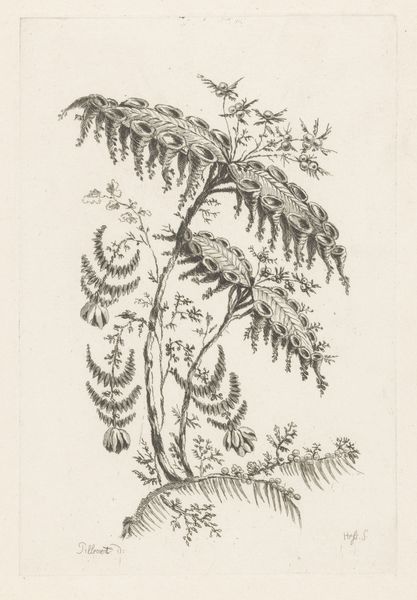
drawing, paper, watercolor
#
drawing
#
dutch-golden-age
#
paper
#
watercolor
#
botanical drawing
#
watercolour illustration
#
watercolor
#
realism
Dimensions: height 349 mm, width 214 mm
Copyright: Rijks Museum: Open Domain
Curator: The delicacy of this watercolor by Herman Henstenburgh, possibly dating from 1685-1687, is really captivating. It’s titled “Brem (Genista)” and showcases, as the name suggests, a type of broom plant. Editor: It’s striking how something so understated can be so engaging. The muted palette really speaks to the botanical interests of the time. Do you feel that this kind of work had social value at that point? Curator: Absolutely. Dutch Golden Age botanical art wasn’t just pretty; it reflected growing scientific curiosity and colonial expansion. Each carefully rendered leaf and blossom was almost like a data point, a record in the burgeoning field of natural history. The broom plant, genista, might have held particular significance depending on its uses – medicinal, ornamental, agricultural, depending on who was commissioning the art, it takes on additional weight. Editor: So, in a sense, these artworks became visual inventories, contributing to how the Dutch Republic understood and controlled its world? I'm fascinated by how such tranquil images could reflect something as charged as colonial activity. Curator: Precisely. But let's consider what the flowers themselves would symbolize at the time. They stand out in pale purple hues. Considering the symbolism of colors and flowers in the period, this detail infuses this work with more than just scientific value. The botanical, philosophical, even psychological connections that would exist for people as they appreciate them makes it extremely important, in ways that go beyond natural history. Editor: I see your point. The act of closely depicting these flowers—with their light and shadow, texture and form, and distinct coloring—endows them with a subtle yet undeniable dignity. And while the light colors have to be attributed to the choice of paper and to the fading process with age, what matters is the impression the work makes on us, in its state right now. Curator: That tension, between a pursuit of accurate representation and this gentler almost contemplative feel is, for me, the reason it still draws us in now. These paintings document much more than the mere look of flora and plants. Editor: Indeed. Thank you for unveiling all the hidden histories it embodies. It prompts us to ponder what beauty really signifies when placed against a wider backdrop of political context.
Comments
No comments
Be the first to comment and join the conversation on the ultimate creative platform.
